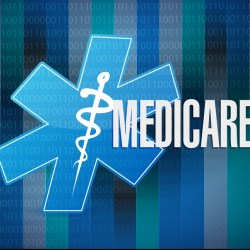Anesthesia Reporting of PQRS for 2016
Anesthesia Reporting of PQRS for 2016

The Physician Quality Reporting System (PQRS) is at the core of a much larger mandate that requires a significant amount of clinical data reporting. This type of accounting does not work fluidly without the use of electronic medical records (EMRs). In order to avoid a financial penalty over the past two years, many practitioners without access to EMRs have transmitted PQRS information on billing forms. This methodology is no longer possible in 2016 for most Ambulatory Surgical Center (ASC) type anesthesia practices. If a practice does not have access to EMRs, it will have to align with a certified reporting registry.
Medicare Requirements
Medicare has directed that certain clinical measures must be reported based on specialty and type of patient encounters. To know what to document necessitates an analysis and compilation of clinical data related to patient care. This analysis is performed by evaluating the procedures and diagnoses most common to a practice and its specialty. Once this analysis is completed, a second analysis needs to be done to determine what measures are available for reporting. Medicare requires disclosing a minimum of nine clinical measures and an additional cross-cutting measure. Healthcare providers will fail PQRS reporting if they neglect to report these 10 measures for 50% of their Medicare patients.
However, Medicare recognizes that not all providers and specialties are able to report the 10 measures and therefore evaluate reporting under a process known as Measures Applicability Process (MAV). This process takes a closer look at all the procedures, diagnoses and PQRS measures filed and determines whether a practice did or did not meet reporting expectations. A financial penalty will be assessed for not meeting expectations and a performance grade will be assigned that will be available to the public.
This mandated reporting is placing a burden on all medical providers, but the onus is going to be increasingly felt by providers not utilizing an EMR. The government subsidized the purchase of EMRs specifically to assist practices in providing the level of clinical data now being required. EMRs can perform the analyses, monitoring and direct electronic reporting to Medicare. Very little human intervention is required once the system is set up properly for PQRS reporting.
To perform these tasks outside the EMR will cost the provider more in time and money and will entail an investment in educating staff regarding practice analysis and the reporting measures. To accomplish the mandated reporting will require a signed agreement with a registry to perform these tasks and to determine how to best transfer information to the registry. Further, an analysis must be performed to clarify minimum measures needed to report without risking a financial penalty.
Options available for analysis, reporting and monitoring of PQRS data reporting when information is not available on an EMR
Analysis of patient encounters and clinical data
It is recommended that a medical billing provider perform the required review of the Current Procedural Terminology (CPT) codes that have been historically billed.
Analysis of PQRS measures available to report
Jim Malloy, CEO of Global Health Management Services (GHMS) states, “Analyzing the available PQRS measures available for reporting can be the most complicated process because there are hundreds of measures. In reality, when whittled down, you may have three to six measures you can report in 2016. Each year, the number of reportable measures will likely rise. Narrowing down the measures to what actually can be and what must be reported requires collaboration between a representative on the clinical side (physician or nurse) and someone well versed in PQRS. There are consultants that can assist in understanding the complexities involved. The more the clinician understands PQRS, the less time and money he or she will spend in the future to meet the reporting mandates.”
Reporting PQRS measures
Reporting PQRS measures must be done through a registry. There are many registries available but almost all charge a fee of $250.00-$400.00 per provider. The practitioner’s job is to provide the data to the registry and the registry’s job is to provide that data in a format acceptable to Medicare. Registries often monitor reporting and provide feedback throughout the year. Providing the data to the registry is the complicated piece when you do not have an EMR to download the data. Therefore, in addition to the registry cost, resources are also needed to get the information manually into the registry.
Regarding anesthesiology as a specialty, the American Society of Anesthesiologists may provide “free” reporting but that may require manually entering information into their system. Other methods might be available such as using a smart phone or tablet to manually enter the information on each patient. These are options that providers may want to explore on their own.
Jim Malloy suggests that GHMS has “explored several registries and we recommend PQRS PRO and Wellcentive. They are certified registries in operation since the inception of PQRS. They provide needed education, are informative and their price is reasonable per provider which is in line with what we are observing.”
In summary, the challenge is to determine the measures healthcare providers will be able to report and then resolve how to best get the information to the registry for those without an EMR in use practice wide. Signing up with the registry is a simple process.






